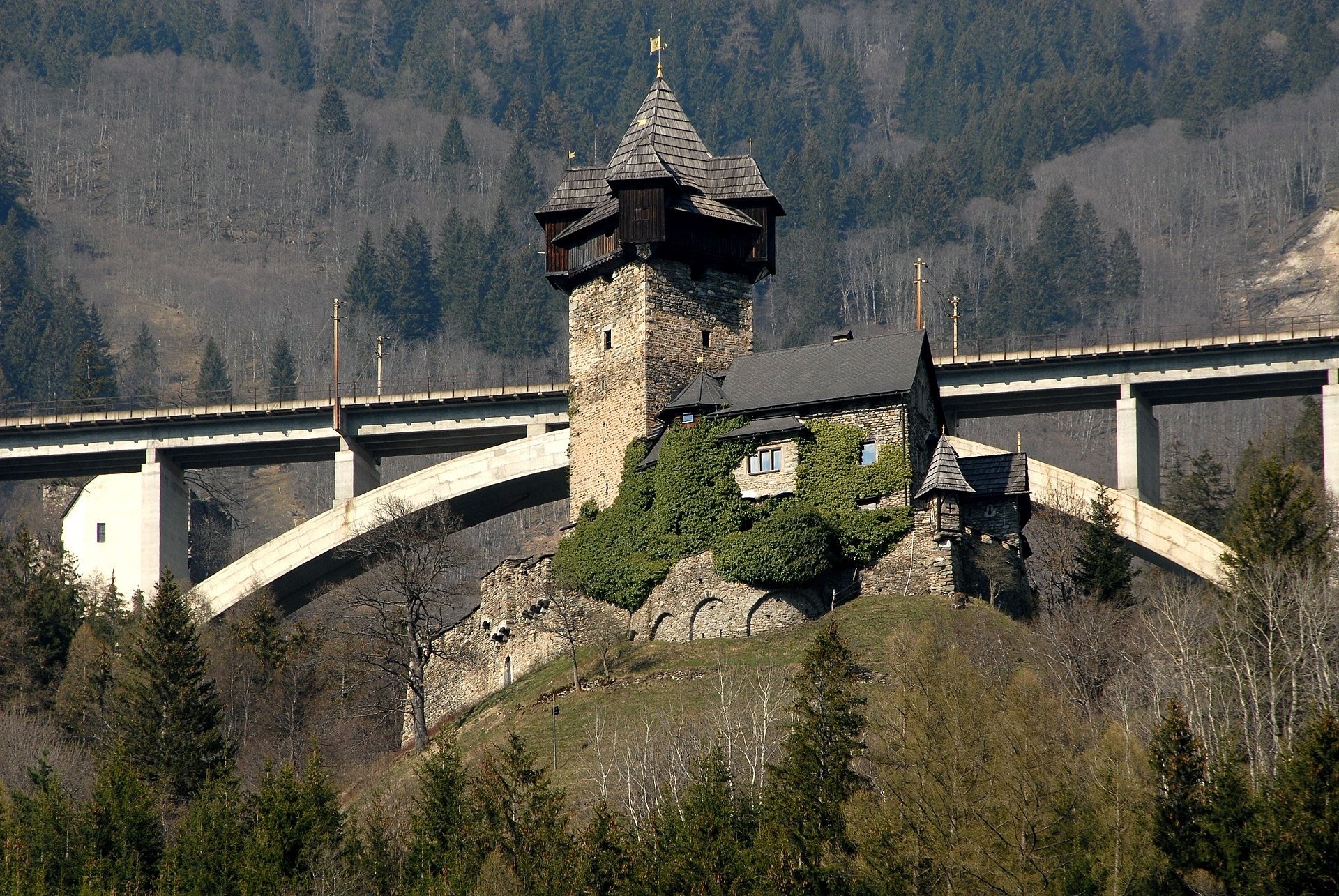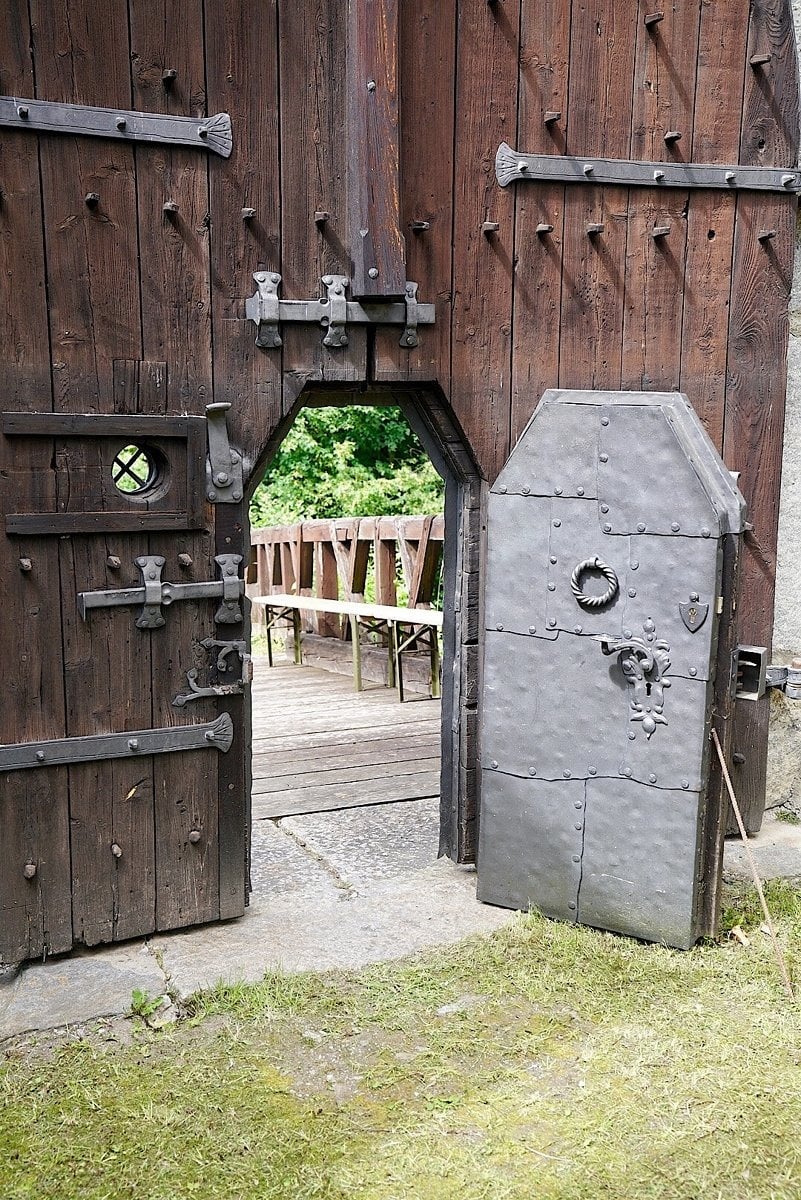Niederfalkenstein Castle: The 12th-Century Castle That’s Unfortunately Privately Owned
Niederfalkenstein Castle is located on a rocky hill overlooking the Möll valley and near Obervellach in Carinthia, Austria.
It is a medieval castle which is a part of the larger Falkenstein fortification complex.
While the upper fortress, Oberfalkenstein, is now in ruins, the lower part of Niederfalkenstein is still mostly intact.

Location of Niederfalkenstein Castle
Niederfalkenstein Castle sits at 843 meters (2,766 feet) above sea level on the slopes of the Reisseck Group in the Hohe Tauern mountains.
It has a fantastic view of the valley below.
The Tauern Railway, which opened in 1909, used to pass through a tunnel under the rock.
However, from 1971 to 1973, the tunnel was replaced by the impressive Falkenstein Bridge, which is the longest on the line at 396 meters (1,299 feet).

The meaning of its name
Niederfalkenstein Castle was first mentioned in 1164 and was originally called Valchenstain Castle.
The name might come from the Proto-Germanic word ‘walhaz’, meaning foreigner or stranger, referring to settlers from the Roman city of Teurnia who moved into the area.

The owners of Niederfalkenstein Castle through years
The castle’s early lord, Gumpoldus de Valchenstein, was a vassal of Count Engelbert II of Gorizia.
The Counts of Gorizia were also the guardians of the nearby Benedictine Millstatt Abbey and had strong ties with the Falkenstein family.
The Falkenstein dynasty ended around 1300.

After that, the castles were given to local nobles by the Counts of Gorizia.
In 1394, Count Henry VI of Gorizia pawned Oberfalkenstein to Duke Albert III of Austria.
It was later seized by Emperor Frederick III in 1460.

Niederfalkenstein had its own share of changes in ownership.
It was briefly held by Carinthian knight Andreas von Graben and then sold in 1462.
In 1504, Emperor Maximilian I pawned it to Count Julian of Lodron.
After Lodron’s death, the castle was bought by Christoph Frankopan, Apollonia’s second husband.
An altarpiece by Jan van Scorel, donated by Apollonia, can be seen in the parish church of Obervellach and shows St. Christopher, Apollonia, and the castle.

Over time, the castle fell into disrepair.
By 1825, it was largely ruined. However, a major restoration began in 1905.
Although a fire in 1969 damaged the castle, it was restored once again.
How is the castle today?
Niederfalkenstein Castle is now privately owned but open to visitors in the summer.

Architectural Features
The upper castle ruins include a large keep surrounded by moats and the remains of a Romanesque palace.

Great Hall (Palas)
The castle’s main residential area, known as the palas or great hall, was originally a large, multifunctional space used for living and gathering.
It would have included the lord’s living quarters and possibly administrative offices.
The palas suffered significant damage over the centuries, including a fire in 1969.
It was rebuilt, but details about its exact appearance post-restoration are limited.

Chapel
The castle includes a chapel dedicated to John the Baptist.
Originally mentioned in 1246, it was expanded in Baroque style in 1772.
The chapel is still in use today, and its interior features Baroque decoration, including elaborate altarpieces and religious art.

Bergfried Keep
The Bergfried, or main tower, is a significant feature of the upper castle ruins.
This keep would have served as a stronghold and living quarters.
Its interior would have included defensive features such as thick walls, small windows, and limited access points.

Cellars and Storage Areas
Like many medieval castles, Niederfalkenstein would have had cellars and storage rooms.
These spaces were used for storing food, wine, and other supplies necessary for sustaining the castle’s inhabitants during sieges or periods of isolation.

